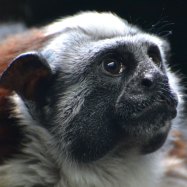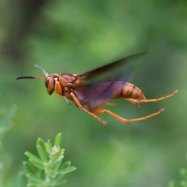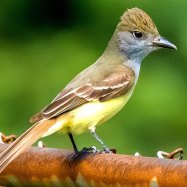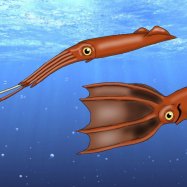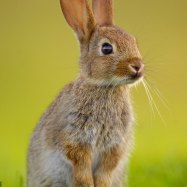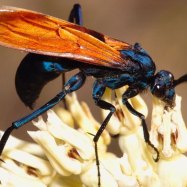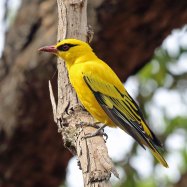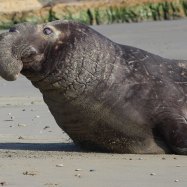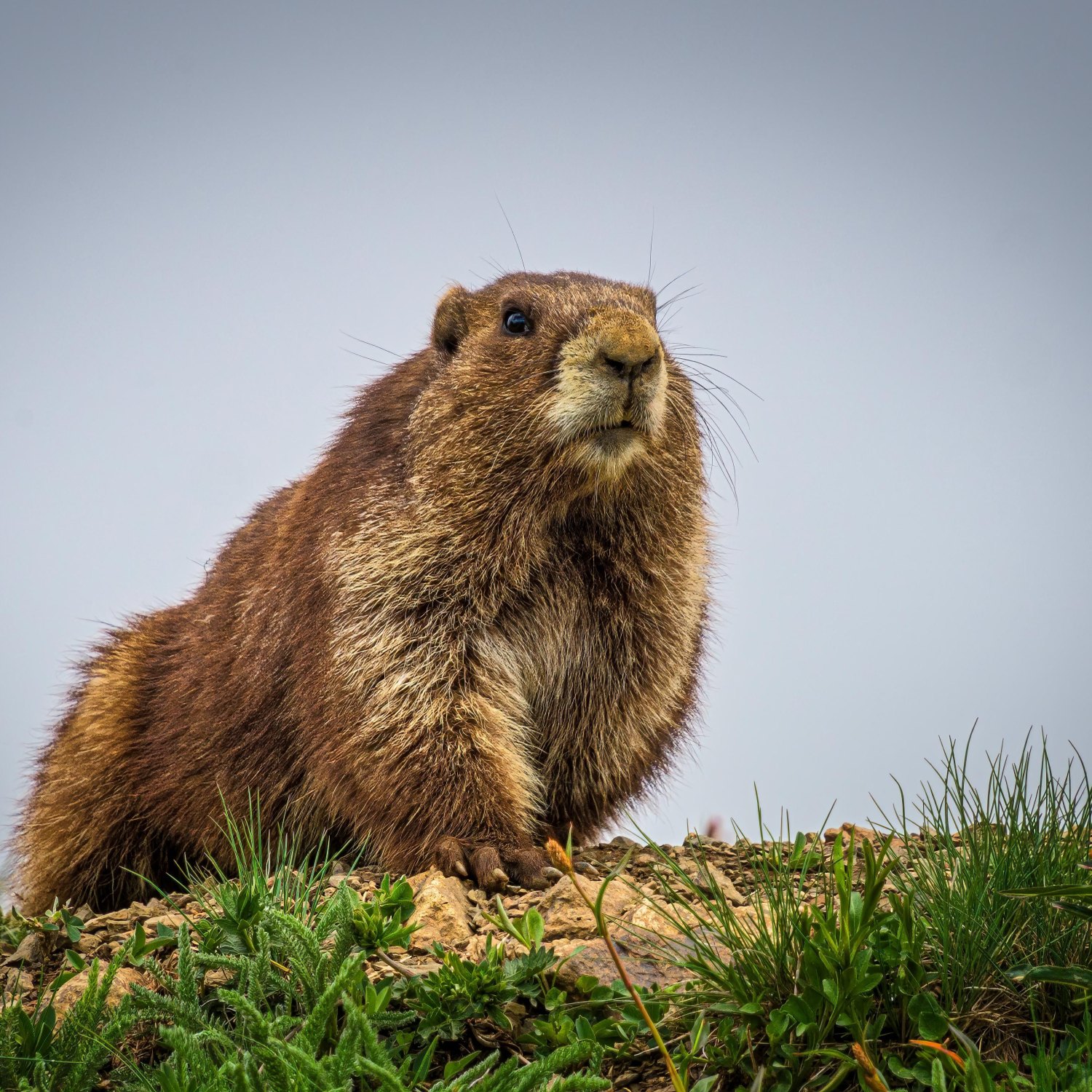
Olympic Marmot
18 to 28 inches
The Olympic Marmot, a chunky member of the squirrel family, can be found in the Mount Olympus National Park. These adorable animals grow up to 18-28 inches in length and have a soft coat of fur. Keep an eye out for this unique species while exploring the park's scenic trails. #OlympicMarmot #MountOlympusNationalPark #Sciuridae
Animal Details Summary:
Common Name: Olympic Marmot
Kingdom: Animalia
Habitat: Alpine meadows and rocky slopes
The Olympic Marmot: The Furry Mascot of Mount Olympus National Park
Deep in the rugged wilderness of the Olympic Peninsula in Washington, USA, resides a unique and charming creature known as the Olympic Marmot. This is no ordinary rodent, but a symbol of resilience and adaptation to harsh alpine conditions. With its adorable appearance and intriguing qualities, the Olympic Marmot is a testament to the diverse and wondrous world of animals in our planet.Scientifically known as Marmota olympus, the Olympic Marmot is a member of the Kingdom Animalia, Phylum Chordata, and Class Mammalia, making it a close relative of other rodent species such as squirrels and chipmunks Olympic Marmot. However, as its name suggests, this species is the sole representative of its genus and is found only in the Olympic Peninsula.
The Olympic Marmot belongs to the family Sciuridae, which includes ground-dwelling rodents such as marmots, ground squirrels, and prairie dogs. It is known for its chunky body shape, measuring from 18 to 28 inches in length, and weighing up to 13 pounds. Its grayish-brown fur, with lighter underparts, serves as effective camouflage against the rocky terrain of its habitat.
Speaking of habitat, the Olympic Marmot is highly adapted to the harsh conditions of the Olympic Mountains, where it resides in alpine meadows and rocky slopes. These high altitudes provide the perfect environment for the marmots, where they can avoid predators and hibernate during the long winter months.
The Secret to Survival: Hibernation and Social Behaviors
One of the most fascinating features of the Olympic Marmot is its ability to hibernate for almost eight months of the year. As their habitat is blanketed in heavy snow, the marmots retreat to their burrows where they spend most of their time sleeping. This is a survival mechanism, as it allows the marmots to conserve energy and avoid the harsh conditions of winter Ornate Black Tailed Rattlesnake.Interestingly, the Olympic Marmot is a social creature and lives in colonies consisting of up to 20 individuals. These colonies are composed of extended family members, with one dominant male and several females with their offspring. This social structure is beneficial for the marmots, as it allows them to protect each other from potential predators.
Moreover, the Olympic Marmots are herbivores, which means that they feed mainly on plants. During the short summer months when their habitat is free of snow, the marmots graze on grasses, flowers, and other vegetation to build up their fat reserves for the upcoming winter. This foraging behavior not only provides them with sustenance but also plays a crucial role in the ecosystem by dispersing seeds and helping to maintain the balance of plant species in their habitat.
An Endemic Species: Unique to the Olympic Peninsula
As mentioned earlier, the Olympic Marmot is found only within the boundaries of the Olympic Peninsula, making it an endemic species. The peninsula, located on the western side of Washington state, is surrounded by the Pacific Ocean on three sides, and the Olympic Mountains form its interior. The high peaks and deep valleys within the mountains create a diverse range of habitats, making it a haven for various plant and animal species.The Olympic Marmot is an essential part of this ecosystem as it serves as a prey species for predators such as coyotes, eagles, and bears. Its foraging behavior also plays a crucial role in the dispersal of plant species, contributing to the diversity of the flora in the peninsula.
Conservation Efforts: Protecting the Olympic Marmot for Future Generations
The Olympic Marmot is currently listed as a species of least concern on the International Union for Conservation of Nature's Red List. However, due to its restricted distribution and human activities, such as habitat destruction and climate change, conservation efforts are necessary to ensure its survival in the wild.The Olympic Marmots' habitat, the Olympic National Park, is part of a designated UNESCO World Heritage Site, and it is illegal to harm or capture these precious creatures. The park authorities also monitor the population size and distribution of marmots to ensure their sustained well-being.
While the Olympic Marmot is relatively well-protected under the current conservation efforts, it is essential to raise awareness about its significance and the need to preserve its habitat. As visitors to the national park, it is our responsibility to respect and protect this unique and adorable animal species so that future generations can also have the chance to witness the Olympic Marmot's charm and resilience.
The Olympic Marmot: A Remarkable Species in a Spectacular Habitat
The Olympic Marmot is a remarkable species that has adapted to the challenging conditions of the Olympic Mountains. Its hibernating behavior, social structure, and herbivore diet make it a fascinating subject for study and a valuable member of the Olympic Peninsula ecosystem.As a visitor to the Mount Olympus National Park, you may catch a glimpse of these fluffy creatures as they forage on the alpine meadows. Remember that the Olympic Marmot is a unique and endemic species, and it is crucial to respect its natural habitat and help protect it for the generations to come. Let us appreciate the beauty and diversity of nature, and most importantly, let us do our part in preserving it.

Olympic Marmot
Animal Details Olympic Marmot - Scientific Name: Marmota olympus
- Category: Animals O
- Scientific Name: Marmota olympus
- Common Name: Olympic Marmot
- Kingdom: Animalia
- Phylum: Chordata
- Class: Mammalia
- Order: Rodentia
- Family: Sciuridae
- Habitat: Alpine meadows and rocky slopes
- Feeding Method: Herbivore
- Geographical Distribution: Olympic Peninsula, Washington, USA
- Country of Origin: United States
- Location: Mount Olympus National Park
- Animal Coloration: Grayish-brown fur with lighter underparts
- Body Shape: Chunky
- Length: 18 to 28 inches
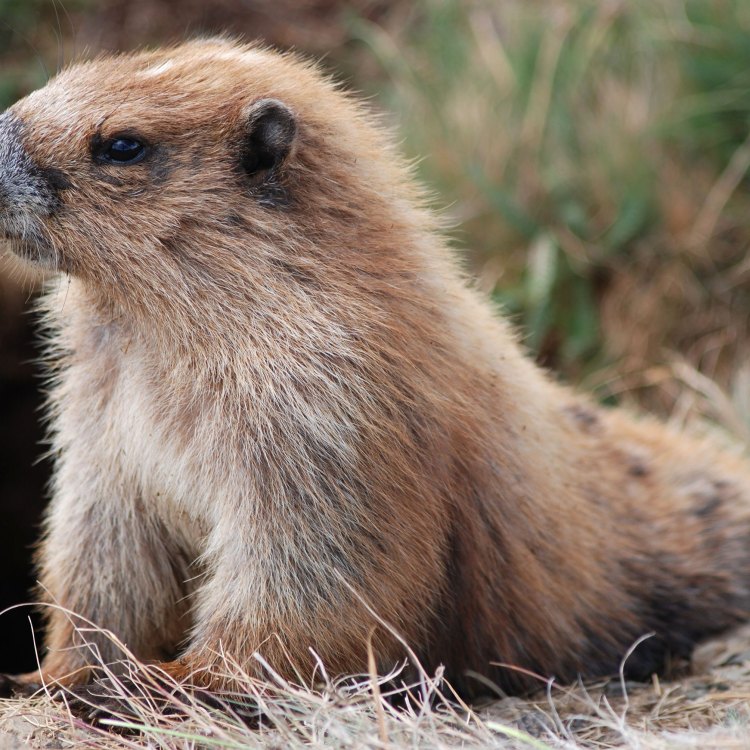
Olympic Marmot
- Adult Size: Small to medium-sized
- Average Lifespan: 6 to 10 years
- Reproduction: Sexual
- Reproductive Behavior: Monogamous
- Sound or Call: Whistles and chirps
- Migration Pattern: Non-migratory
- Social Groups: Colonial
- Behavior: Diurnal and social
- Threats: Predation and habitat loss
- Conservation Status: Least Concern
- Impact on Ecosystem: Important to alpine ecosystems
- Human Use: Tourism and research
- Distinctive Features: Large size, broad head, and short ears
- Interesting Facts: Olympic Marmots are endemic to the Olympic Peninsula in Washington state and are only found in alpine meadows and rocky slopes above the treeline. They hibernate for up to 8 months of the year and live in colonial groups called colonies. They are highly social and communicate through whistles and chirps. The Olympic Marmot is the largest and heaviest species of marmot.
- Predator: Golden eagles, coyotes, and bobcats
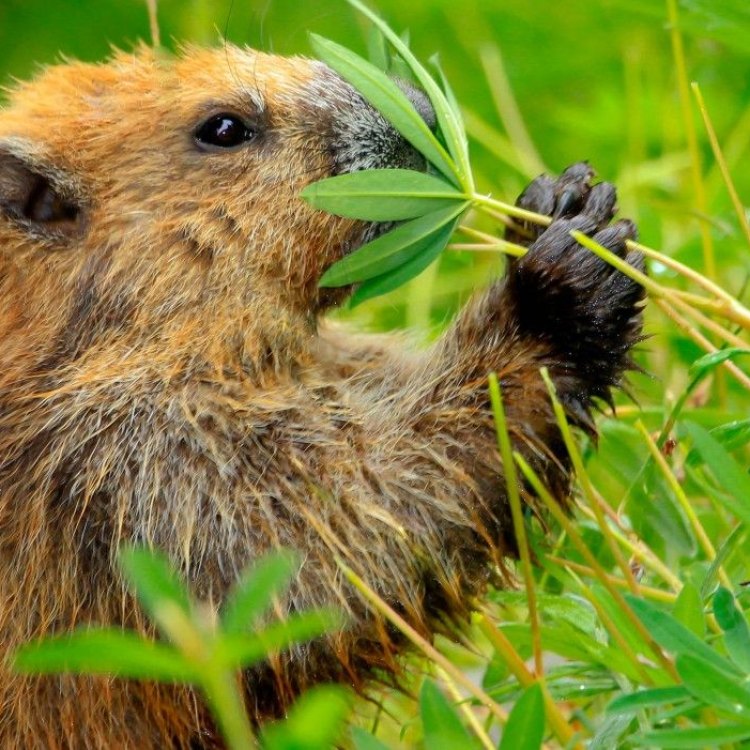
Marmota olympus
The Fascinating Olympic Marmot: An Alpine Jewel of Washington State
Nestled high in the breathtaking Olympic Peninsula of Washington state, lives a unique and charming creature – the Olympic Marmot. This iconic species, with its large size, broad head, and short ears, is a true jewel of the alpine ecosystem. In this article, we will delve deep into the world of the Olympic Marmot and discover what makes it such a fascinating and important creature.The Olympic Marmot, also known as the Olympic Groundhog or Homilus Olympicus, is native to the Olympic Peninsula and is found in rocky slopes and alpine meadows above the treeline PeaceOfAnimals.Com. It is a small to medium-sized member of the squirrel family and is closely related to other marmot species found in North America.
An Endemic Species
One of the most interesting facts about the Olympic Marmot is that it is endemic to the Olympic Peninsula – meaning it is found nowhere else in the world. This makes it a truly unique and special species, and a symbol of the region's diverse and rich biodiversity.The Olympic Peninsula, located in the Pacific Northwest, is known for its rugged and diverse landscape, from snow-capped mountains to old-growth rainforests. The peninsula is also home to a variety of other endemic species, including the Olympic Mountain Goat and the Olympic Vole.
A Social Creature
The Olympic Marmot is a highly social animal and lives in colonies, which can consist of up to 20 individuals. These colonies are made up of family groups, with a dominant male, dominant female, and their offspring. These groups are essential for the marmots' survival, as they provide protection from predators and share resources.Communication is important for the survival of the colony, and the Olympic Marmot has a unique way of communicating – through whistles and chirps Old House Borer. These vocalizations are complex and varied, and are used to warn the group of potential dangers or to alert them to the presence of food.
A Diurnal Lifestyle
Unlike many other hibernating animals, the Olympic Marmot is diurnal – meaning it is active during the day. Due to its alpine habitat, the marmot has adapted to forage during the day and hibernate at night when temperatures drop. This behavior is crucial for its survival, as it allows the marmot to take advantage of the short alpine summer and store enough fat to hibernate for up to 8 months of the year.A Monogamous Reproduction
The Olympic Marmot is a monogamous species, meaning it forms life-long bonds with its mate. Breeding occurs in late spring to early summer, and only the dominant male and female in a colony will reproduce. After mating, a female will enter her burrow and give birth to 3-6 pups, usually in July.The pups are born blind, hairless, and weigh only a few ounces. They spend the first month of their lives in the burrow, nursing and growing. By August, they are ready to venture out of the burrow and explore their surroundings. Once they are weaned, the young marmots will stay with their family group for another year before venturing out on their own.
Threats to Survival
Despite being an important species to the alpine ecosystem, the Olympic Marmot faces several threats to its survival. One of the biggest threats is predation, as golden eagles, coyotes, and bobcats are known to hunt marmots for food. These predators are especially problematic for colonies with smaller numbers, which are more vulnerable.Habitat loss is also a significant threat to the Olympic Marmot. As human development and recreation activities continue to expand, the marmot's natural habitat is shrinking. This leaves them with less space to forage and hibernate, putting their survival at risk.
Conservation Efforts
The Olympic Marmot is currently listed as a species of Least Concern by the International Union for Conservation of Nature (IUCN). However, conservation efforts are still crucial to ensure the future of this unique species.The Olympic National Park, which encompasses a significant portion of the Olympic Peninsula, provides protection for the marmot's habitat. The park's management also works closely with researchers and conservation organizations to monitor the marmot population and implement measures to protect them.
The Role in the Ecosystem
The Olympic Marmot plays an essential role in the alpine ecosystem. As a herbivore, it helps control plant growth, creating a more diverse and balanced ecosystem. The marmots also provide a valuable food source for predators, contributing to the overall health of the food chain.Additionally, the marmots' hibernation pattern plays a crucial role in the ecosystem. When they hibernate, their burrows become important homes for other species, such as pikas and birds, providing warmth and shelter during the harsh winter months.
Human Use: Tourism and Research
The Olympic Marmot also has a significant impact on the local economy through tourism and research. These charming creatures are a popular sight for visitors to the Olympic Peninsula, drawing in nature enthusiasts and animal lovers from all over the world.Researchers are also interested in the Olympic Marmot, as it provides valuable insights into the effects of climate change on alpine species. Due to its specific habitat requirements, the marmot can serve as an indicator of the health of the alpine ecosystem.
A True Symbol of the Olympic Peninsula
In conclusion, the Olympic Marmot is an iconic and important species that calls the Olympic Peninsula home. Its distinctive features, social behavior, and crucial role in the ecosystem make it a true symbol of this diverse and beautiful region of Washington state. As we continue to learn more about this unique creature and work towards its conservation, we can ensure that the Olympic Marmot remains a treasured part of our natural world for generations to come.
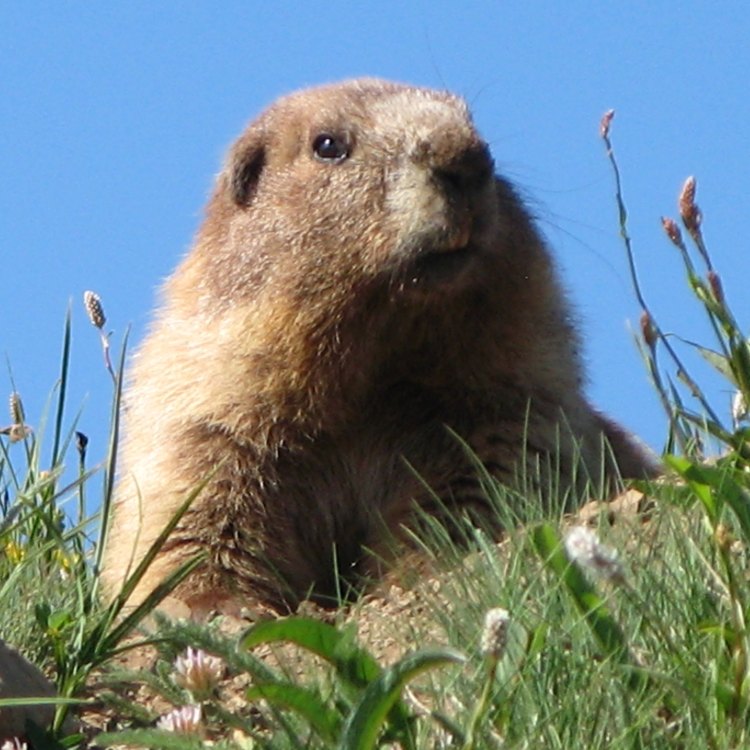
The Olympic Marmot: The Furry Mascot of Mount Olympus National Park
Disclaimer: The content provided is for informational purposes only. We cannot guarantee the accuracy of the information on this page 100%. All information provided here may change without prior notice.



